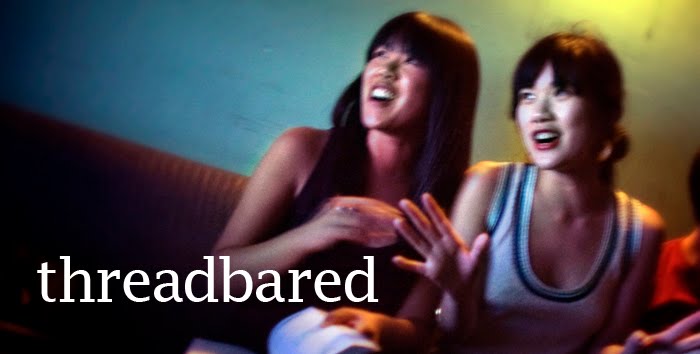 Getting dressed to go to campus is a constant negotiation with colleagues who might read me one way, and students another. With neither campus population is it easy to be small, Asian, female-bodied, with a recognizably feminine gender presentation that is often read, because I am queer, as femme. Here lie far too many assumptions about who I am and how to interact with me, based on the stories my clothes, and my body "activating" them, presumably tell. (Look, I take out my own garbage, and I will not cut you slack if you do not complete the assignment correctly.)
Getting dressed to go to campus is a constant negotiation with colleagues who might read me one way, and students another. With neither campus population is it easy to be small, Asian, female-bodied, with a recognizably feminine gender presentation that is often read, because I am queer, as femme. Here lie far too many assumptions about who I am and how to interact with me, based on the stories my clothes, and my body "activating" them, presumably tell. (Look, I take out my own garbage, and I will not cut you slack if you do not complete the assignment correctly.)Because of these daily worries, I occasionally document my teaching outfits to reflect upon and otherwise make sense of that day's sartorial strategy. Unfortunately, I can no longer snap a quick photograph on my MacBook Pro's Photo Booth (the camera is dead). Instead, here's an archival photograph of my go-to First Day of Teaching Outfit from the last several years. I usually wear black to add a touch of stern scholar to the usual administrative rituals of the first day, but this year, because of the warm weather, I paired the knee-length skirt and unseen black kitten heels with a vintage '50s silk blouse in a abstract pattern of bright pastels and a large white enamel modernist-style pendant. I am considering chopping the long hair (which is usually in a ponytail for convenience) in favor of a more severe, but also crazier, cut, but I'm not sure this small college town can sustain this desperate desire with adequate hairdressing.
____________________
Last week I had my students discuss the Sartorialist's photograph of a "surprisingly stylish" homeless man -- though as several of my students noted, since Sart did not actually speak to the man, we have no evidence that he is actually homeless. "My grandpa would totally leave the house with shorts over sweatpants," one or two argued, adding, "My grandmother hates it when it does that." The class was quick to move on from the familiar effort to imagine a different interior life for the man pictured ("He probably has better things to worry about!" is itself an assertion of what is valuable and proper) to recognize that in doing so, they would also be presuming to "know" him based on no evidence. We deny him a more complex personhood when we name this man as exceptional among the homeless because he matches or layers and thus exhibits dignity, or otherwise portray him as "just trying to survive" absent of dreams, desires, or even so-called deviancy.
This is one of the important lessons of the course so far: the stories we create around persons from their clothes often say more about us, and about the larger social, political, economic discourses and practices that inform our world-views both consciously and unconsciously, than about the persons we are looking at.



